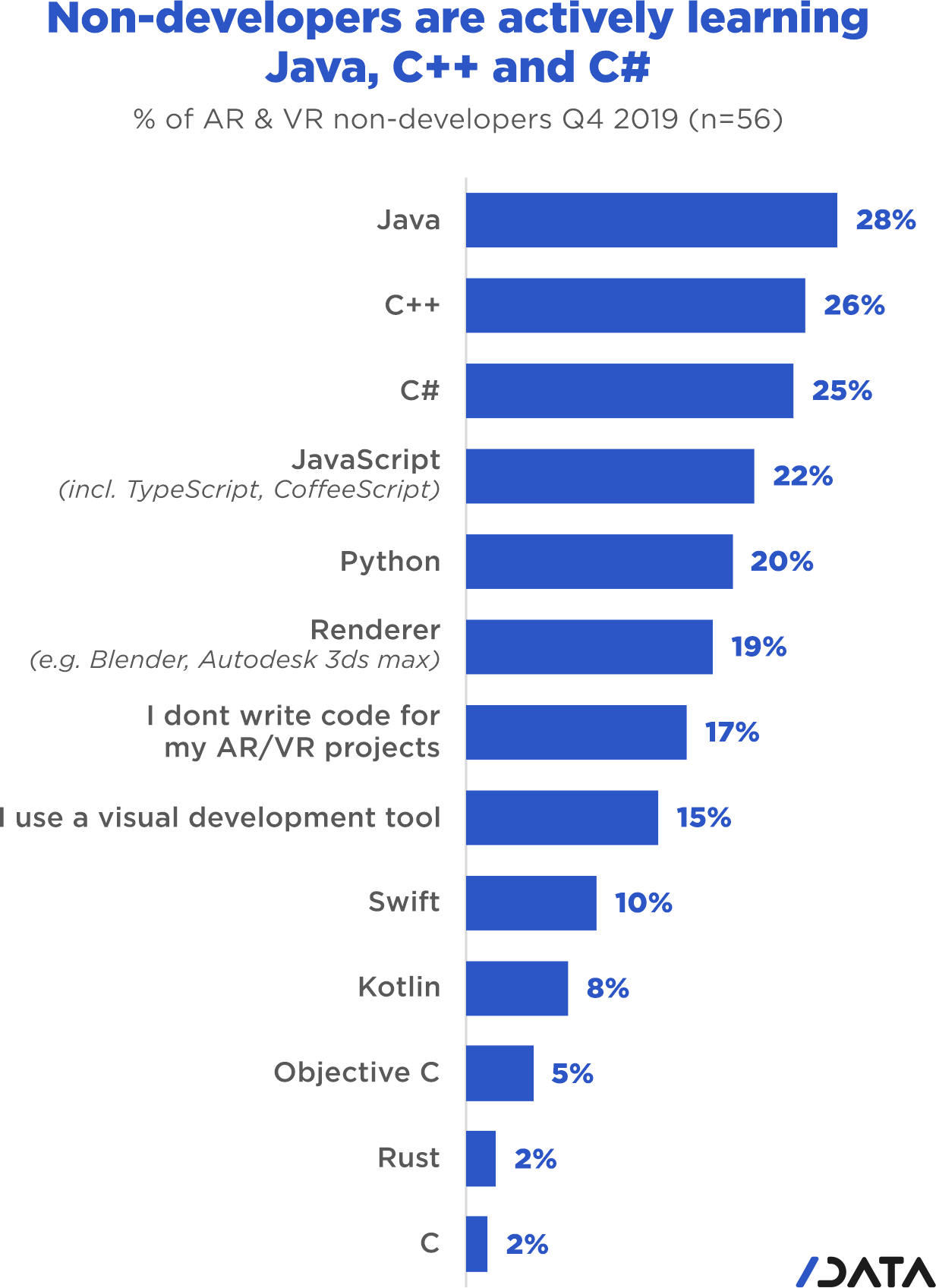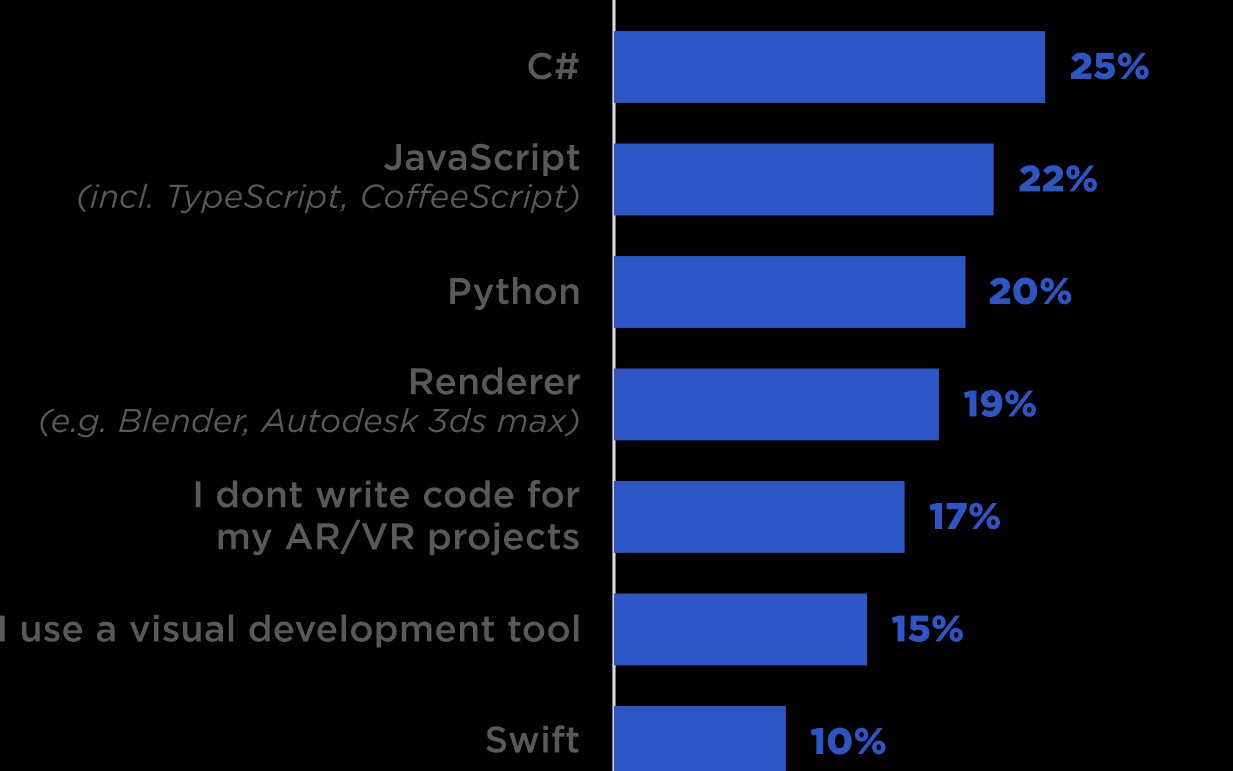We continue to look into some of the trends in the AR and VR ecosystem, focusing on the main differences between developers and non-developers active in this space. You can view our first part of this article here.
22% of AR/VR Non-Developers Are Learning to Code
15% of people involved in AR and VR as non-developers have zero knowledge of how to code, whereas 17% are actively coding to get things done. There is a large range of skills, but the biggest group here are those that are actively trying to build on their coding skills, with 22% of AR/ VR non-developers doing so. This indicates that no-code tools, whilst useful for getting things done, don’t cover the needs of more than 1 in 5 AR and VR practitioners who are subsequently learning to code to overcome these limitations.
Despite a large amount of effort — and marketing — that has gone into positioning no-code tools as a solution for non-coders to get into AR and VR without worrying about writing code, a sizeable proportion of those who do get involved subsequently decide they need coding skills to realize their vision after all. This represents an opportunity for platforms aspiring to appeal to non-coders to create more functionality in these tools to capitalize on this under-served audience.
Amongst non-developers trying to improve their coding skills the most popular languages are Java (28%), C++ (26%), C## (25%), and JavaScript (22%). 17% don’t write code for their AR/VR projects, and 15% use a visual development tool. This indicates that non-developer AR and VR practitioners see the value in knowing how to code, but that they still want to create things while they’re learning.

Games Is the Most Popular App Category for Developers and Non-Developers Alike
AR and VR practitioners are primarily focused on creating entertainment and services products, but the primary focus is different for developers and non-developers. 77% of AR/VR developers are building products in the services category (such as business logistics products) whereas only 67% of non-developers are doing so.
The most popular category for AR and VR practitioners is games and toys, with 52% of developers and 44% of non-developers working on products in this category. The picture is somewhat different for other entertainment products (such as moves and animation), with 65% of non-developers working on apps in this category and only 47% of developers operating here. This indicates that developers are using their coding experience to experiment and create games in AR and VR, whilst non-developers are inspired by other use cases.
Industrial applications (such as manufacturing and construction) for AR/VR are much less popular for both groups, but a larger proportion of developers are creating products in this category than non-developers. As AR and VR mature and stabilize, commercial applications will become more viable and we will see further innovations in industrial areas from developers and non-developers alike, but the pull of building entertainment apps will still be strong.

#iot #ar #survey #vr #no code development #vr and ar #non-developer
